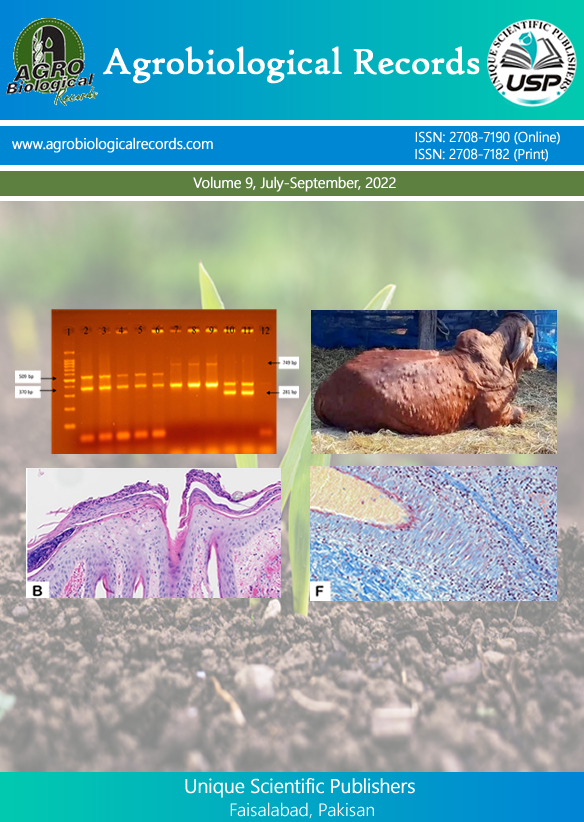
Muhammad Ahmad1,2, Saba Sadiq1,3 , Sumeera Asghar4 , Faisal Hayat5 , Nisar Hussain2 , Mariam Hameed1 , Umer Karamat6 , Sonia Shaheen7 , Muhammad Sarwar Khan1 and Faiz Ahmad Joyia1*
1Centre of Agricultural Biochemistry and Biotechnology (CABB), University of Agriculture, Faisalabad, Pakistan 2Department of Vegetable Science, College of Horticulture, China Agricultural University, Beijing 100193, China 3Department of Environmental, Biological and Pharmaceutical Sciences and Technologies, University of Campania Luigi Vanvitelli, Via Vivaldi 43, 81100 Caserta, Italy 4The Key Laboratory of Plant Resources Conservation Germplasm Innovation in Mountainous Region, College of Life Sciences Institute of Agro-Bioengineering, Guizhou University, Guiyang 550025, China 5Department of Integrative Agriculture, College of Agriculture and Veterinary Medicine, United Arab Emirates University, Al Ain P.O. Box 15551, United Arab Emirates 6Guangdong Key Laboratory for New Technology Research of Vegetables, Vegetable Research Institute, Guangdong Academy of Agricultural Sciences, Guangzhou 510642, China 7 Institute of Soil and Environmental Sciences, University of Agriculture, Faisalabad, Pakistan
*Corresponding author: faizahmad1980@gmail.com
Amaranthaceae includes the genus Amaranthus, characterized by the enormous morphological and biological diversity that has allowed it to thrive in many diverse environments. Therefore, the development of transgenics relies largely on the ability to produce true-to-type plants using an efficient in vitro regeneration protocol. This study was conducted partly to develop a robust in vitro regeneration protocol for Amaranthus lines and partly to determine the reported protocol's usefulness by analyzing the regenerated plantlets' genetic diversity. Growth of the plants was most favorable with a sucrose concentration of 30g/L. A-20 and A-21 lines produced the highest callus induction response when 2,4-D and kinetin were used as plant growth regulators at 2.3µM concentration. Callus was initiated from epicotyl explants on MS medium with 2,4 D and kinetin. Callus induction rates from different lines varied, where in A-21 and A-20 100%, in A-42 82% and A-96 58%. Callus responded well to two media combinations: one being NAA (0.5µM) and Kinetin (2.3µM), and the second was Zeatin (4mg/L) and IAA (0.01mg/L). Simple sequence repeats (SSR) markers were then employed to determine whether genetic diversity exists among regenerated plants of the corresponding Amaranthus line A-20, A-21, A-42, and A96. Genetic similarity between all lines and lack of detectable variation was evident by SSR-PCR amplification of genomic DNAs with three primer sets, AHF1+AHR1, AHF2+AHR2, and AHF3+AHR3. This study describes a reliable in vitro regeneration system for true-to-type plant development. Thus, the reported methodology provides the tools for future Amaranthus genetic studies and breeding programs.